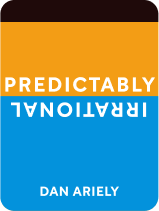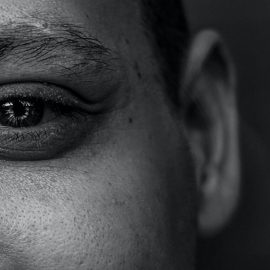

This article is an excerpt from the Shortform book guide to "Predictably Irrational" by Dan Ariely. Shortform has the world's best summaries and analyses of books you should be reading.
Like this article? Sign up for a free trial here .
What does self-herding mean? How can a good first impression lead you to make irrational choices? Is it possible to un-form your self-herding habits?
Self-herding is when you decide if something is good or bad depending on your past experiences, then you continue to copy that behavior until it becomes a habit. This can lead you to justify your irrational decisions. However, it is possible to recognize and change your self-herding habits.
Continue on to learn more about self-herding and how to avoid it.
Making Decisions Based on Self-Herding
To understand how a price anchor can translate into long-term habits, it’s important to first understand the concept of herding. Herding is when you observe the behaviors of other people to decide if something is good or bad and copy the crowd’s behavior. For example, if you see a line of people waiting to get into a restaurant, you’ll determine that it’s a good restaurant and might also hop in line.
What’s interesting is that you can also perform self-herding—you decide if something is good or bad depending on your own past behavior, and you continue copying that behavior. In this way, a positive first impression (anchor) about a decision you’ve made can result in a long pattern of copying your own behavior. Eventually, you believe this behavior is your preference and not just an echo of that first decision.
Example: The Sandwich Shop
On a whim, you decide to get a sandwich at the artisanal deli down the block from work, instead of going to Subway as usual. The sandwiches, while they’re much more expensive, aren’t much different. However, the deli has a nice perk—comfortable couches and a fireplace to enjoy while you eat. Overall, you form a positive first impression about the deli—which becomes the anchor underpinning your future lunchtime decisions.
The next week, you’re thinking about where to go for lunch. Rationally, you should think through your options while considering the cost of the food, the distance from work, and so on. Instead, you simply recall that you tried the deli and that you enjoyed the experience. Based on this positive first impression, you determine that the deli is a good choice and go again. So begins the process of self-herding.
The third week, you recall your two previous decisions to go to the deli and go again—a bit like getting in line behind the people queuing outside a restaurant. Based on the fact that you keep going to the deli, you may believe that it’s your preference. In fact, it’s just your primary decision compounded into a habit. Habits built from self-herding often aren’t the most rational choice. You know, rationally, that Subway is closer to your office and offers a similar product for a lower cost. But, because you continue going to the deli, you irrationally believe that you’re making a conscious decision about how you want to spend your money.
The Circumstances That Can Set New Anchors
Since the products are similar, shouldn’t you be anchored to Subway’s prices, and realize that the cost of the artisanal sandwiches is too high? Rationally, yes. However, because the artisanal place feels so different, it becomes a first impression, instead of being comparable to the Subway. If the deli had a very similar aesthetic to Subway, you’d likely realize that the high prices weren’t the best use of your money. But the fact of the matter is, the food looks nice and there are nice window seats—in your mind, it’s a completely different type of place and the higher prices are justified.
Making Better Decisions
Thinking rationally about your self-herding behaviors can help you untangle habits from your true preferences—allowing you to spend your money in more fulfilling ways. In examining your “preferences,” ask yourself several questions:
- How did this preference start?
- What pleasure am I getting from this preference? Is it worth the money and time I spend on it?
- Is it possible for me to cut back? Is there a wiser way I could be spending this money?
You can also prevent yourself from forming future habits by giving extra thought to your first decisions to do something. Would you want it to become a long-term habit?
Why the Supply & Demand Model Doesn’t Make Sense
The implications of price anchoring and self-herding are much further-reaching than choosing a favorite sandwich shop. In fact, we should be rethinking the standard supply and demand model. Standard economics would tell us that prices are determined by demand—the higher the demand, the more people are willing to pay for a product.
However, we know this model doesn’t make sense, because our anchors are so arbitrary.
- First, people often aren’t aware of their anchors, so it’s hard to accurately predict how much they’d be willing to pay for a product.
- Second, anchors can be manipulated very easily—simply thinking about several random digits can create an anchor.
These findings of behavioral economics suggest that it’s actually the prices themselves, or the anchoring that happens on the supply end of the system, that influence how much people will pay.
Furthermore, the discussion of self-herding tells us that looking at peoples’ preferences won’t give you accurate information about their willingness to pay for products—their demand is based on their memories. The aversion we feel to paying a higher price for a product is because we remember how much we paid for it in the past (or the anchor we established when we considered buying it), and we want our present decisions to be coherent with our past decisions. Of course, this means that over time, your anchors can naturally change.
- For example, if the price of milk in Wisconsin jumped from $2.95 to $5 overnight, there would be a steep drop in demand because the memory of $2.95 gallons would be fresh in everyone’s minds. However, as they continue needing to buy $5 milk over time, the decision to do so becomes a habit—decisions coherent with previous decisions. Over the long term, their memories of the $2.95 gallon would fade, and demand for milk would steadily increase back to where it was before.

———End of Preview———
Like what you just read? Read the rest of the world's best book summary and analysis of Dan Ariely's "Predictably Irrational" at Shortform .
Here's what you'll find in our full Predictably Irrational summary :
- How logic is failing you on a daily basis
- How to identify your irrational behaviors
- Why getting something for free can cause you to make bad decisions






